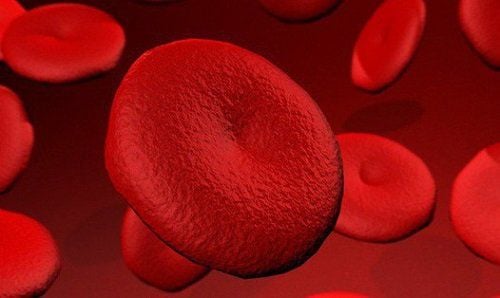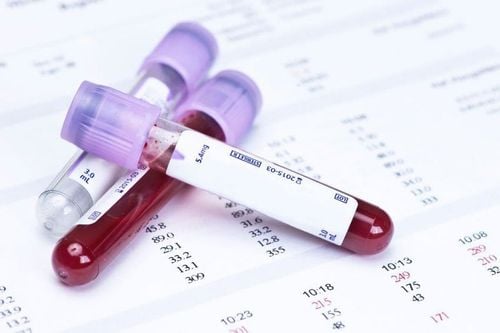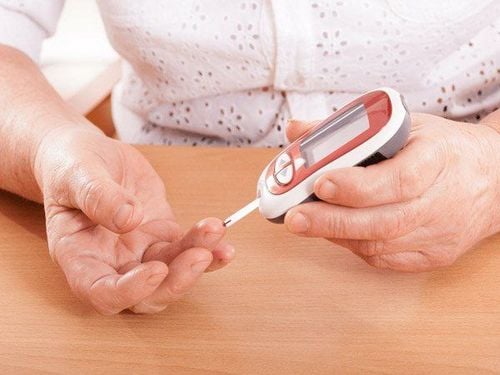This is an automatically translated article.
The article is professionally consulted by Master, Doctor Pham Thi Thuy Nhung - Head of Laboratory Department - Vinmec Hai Phong International General Hospital.Coagulation tests are used to evaluate and diagnose bleeding problems. In addition, this test is also used to monitor people using warfarin or other anticoagulants. There are many different coagulation tests available, and the choice of which depends on the circumstances and the problem at hand.
1. Blood clotting tests
1.1 General analysis of peripheral blood cells.
Peripheral cytology is a routine test used to count the number of red blood cells, white blood cells, and platelets in each milliliter of blood. This test can show if the platelet count in the blood is low or if it is high.1.2 Bleeding time test
This test is done by inserting a needle into the earlobe or arm to let the blood flow naturally and measuring the time from when the bleeding starts to when it stops. The normal duration of the bleeding time test is less than 5 minutes.
1.3 Basic coagulation tests
After the blood sample is collected, it is put into a test tube containing anticoagulant and will be analyzed in the laboratory. Various tests such as a PT test or an APTT test may be performed to check the activity of clotting factors.
These tests are done by measuring the time it takes for a blood clot to form after some activated substance is added to a blood sample. If it takes longer to form a blood clot than a normal blood sample, it means that one or more clotting factors are low or absent in the sample. Depending on the clotting factor you want to determine, other specialized tests are performed.
1.4 Tests to monitor the use of anticoagulants

When taking anticoagulants, too much can cause bleeding problems, too little medicine can increase the risk of blood clots forming. Therefore, it is necessary to use tests to monitor anticoagulation use.
An INR test is a test used to monitor the dose of a drug (usually warfarin) given to a user. The INR was calculated using the PT test. Your doctor will set a 'target' INR level for you, depending on the reason for taking the medication. By checking your blood regularly, your doctor can help you adjust your dose to achieve this 'target' INR.
1.5 Quantification of clotting factors
The amount of clotting factors in the blood can be determined using a number of different techniques. When your routine blood clotting test shows a problem with your blood clotting, one or more tests should be done. Example: This test is used to determine the amount of factor VIII in a blood sample checking for HaemophiliA (for people with HaemophiliA, this factor is very low or absent).
1.6 Test for platelet aggregation
This test is used to measure the rate and extent of aggregation after the addition of an aggregation promoter to a thrombocytopenia plasma sample. The test is used to check the function of platelets.
1.7 Tests to check blood clotting
If a blood clot is found to be forming in a normal blood vessel, you may need some tests to determine the cause. Example: A blood test that checks for 'factor V Leiden', an abnormal change in factor V - makes it easier for blood clots to form.
1.8 Other tests
There are many other conditions that can affect blood clotting such as vitamin deficiency, leukemia, liver dysfunction, or infections. Therefore, in addition to the clotting test, other tests should be done to find the cause of the abnormal number of platelets or clotting factors.
2. When should a coagulation test be done?
Customers can be advised to perform coagulation tests in the following cases:
Suspected bleeding disorder. Have certain liver diseases that can affect the formation and destruction of clotting factors. Assess risk of bleeding prior to surgery. A blood clot forms in a blood vessel for no apparent reason. Are taking an anticoagulant such as warfarin (to check if the dose is on target). Vinmec International General Hospital is one of the hospitals that not only ensures professional quality with a team of leading doctors, modern equipment and technology, but also stands out for its examination and consulting services. and comprehensive, professional medical treatment; civilized, polite, safe and sterile medical examination and treatment space. Customers when choosing to perform tests here can be completely assured of the accuracy of test results.
Please dial HOTLINE for more information or register for an appointment HERE. Download MyVinmec app to make appointments faster and to manage your bookings easily.














